
With great pleasure, we are delighted to honour this remarkable historical figure by delving into the topic of the Silk Road, using the diversity of the contents preserved in the Scala archives.
See here a selection of images dedicated to this theme.
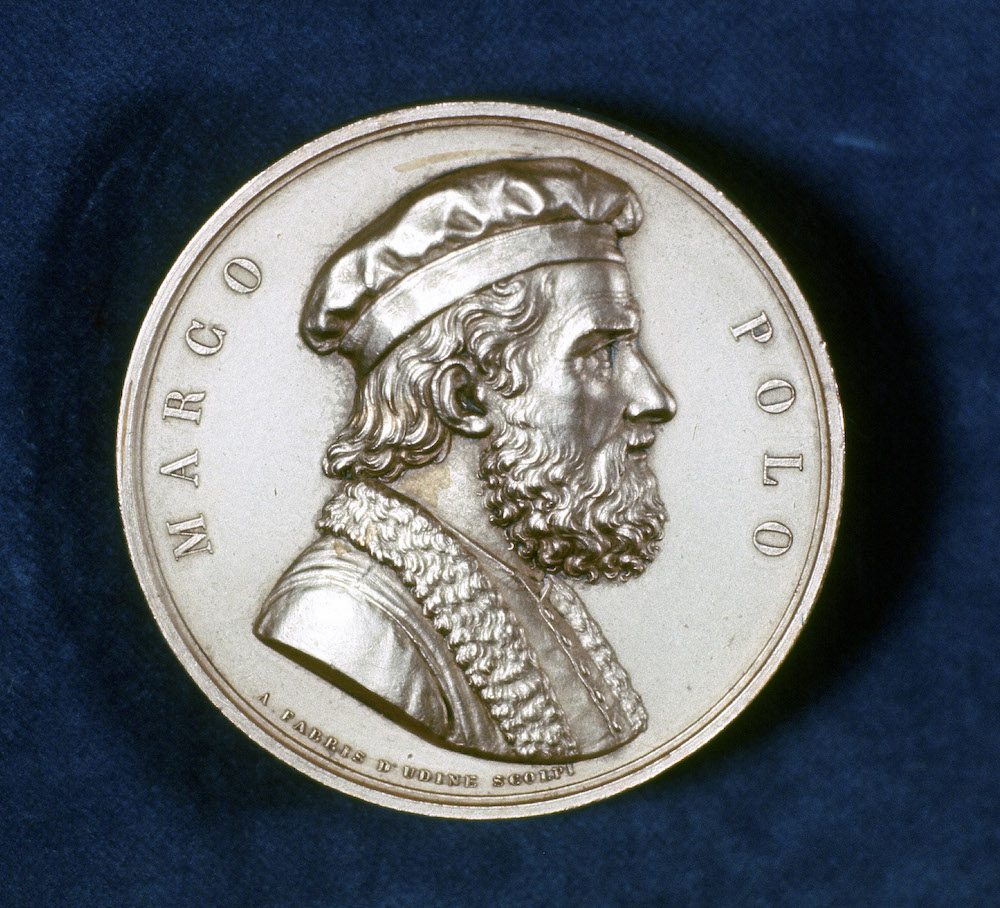
Marco Polo, renowned as one of the most famous travellers along the Silk Road from 1271 to 1289, is widely recognized for his extraordinary explorations.
Born into a wealthy merchant family in Venice in 1254, a young Marco Polo embarks on an expedition alongside his father Nicolò and uncle Matteo. At the age of only 15, he begins a remarkable 25-year travel to the Far East, undertaking both land and sea voyages.
This historical period is marked by a significant increase in trade, as the Mongol expansion prompts the East to open its doors to the West, while the Mediterranean eagerly seeks raw materials from the East. The discoveries of paper and gunpowder emerge as two pivotal innovations that will have a lasting impact in their respective fields.
Through a mission entrusted to his family, Marco Polo obtains a prestigious permit from Kublai Khan, the Chinese emperor, granting him freedom of movement and the opportunity to gain a deep understanding of China. As a result, what was initially planned as a one-year journey transforms into a 20-year expedition, spanning across a vast continent filled with opulence and fascinating customs waiting to be discovered.
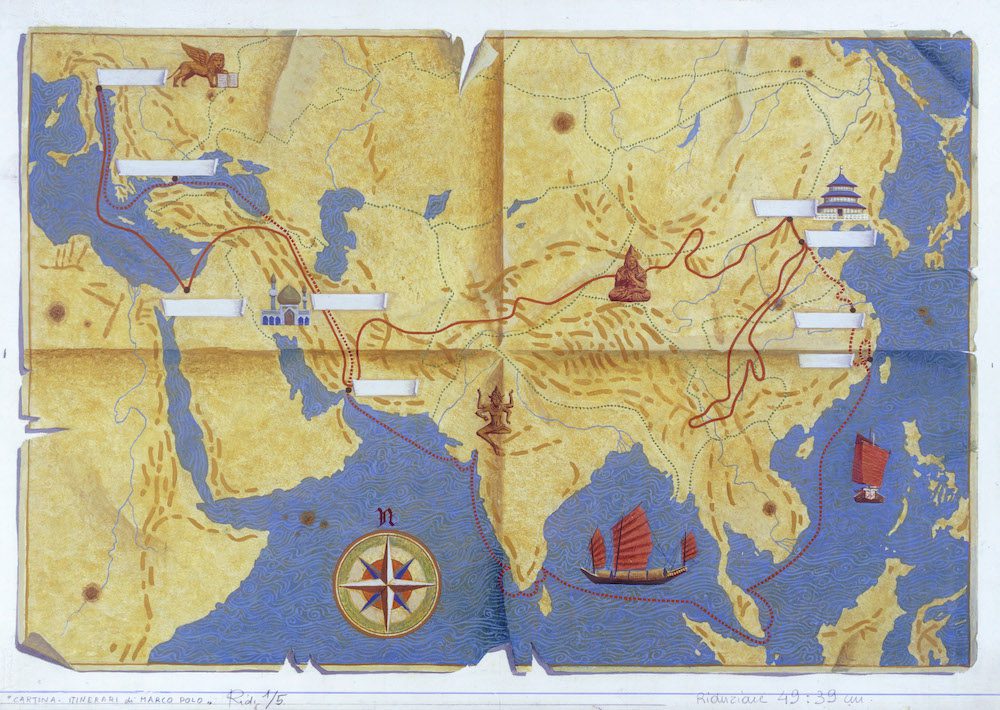
Marco Polo’s travel accounts owe their existence to Rustichello da Pisa. While imprisoned in Genoa, Polo crossed paths with Rustichello, a Tuscan writer, leading to the creation of “The Million,” a remarkable work comprising 183 chapters dictated by Polo.
The initial part of the book delves into the Polo family’s background and their involvement in trade and diplomacy as representatives of Pope Gregory X. It also recounts their early expeditions to China and experiences at the Chinese court.
Following this, Polo takes readers on a captivating journey, vividly describing the diverse cultures and countries encountered along the route to China: from Turkey to Georgia, from Persia to various Asian territories, ultimately reaching Cathay. The final section of the book focuses on Kublai Khan, the Mongol ruler, documenting Polo’s extensive travels throughout various Asian regions under the Khan’s patronage.

The book known as “The Million,” originally named “Divisament dou monde” (the description of the world), has been passed down to us in multiple languages and editions.
One of the most precious editions is preserved at the British Library in London, titled “Li Livres du Grant Caam, or Travels of Marco Polo,” which was originally published – or created – in France after 1333.
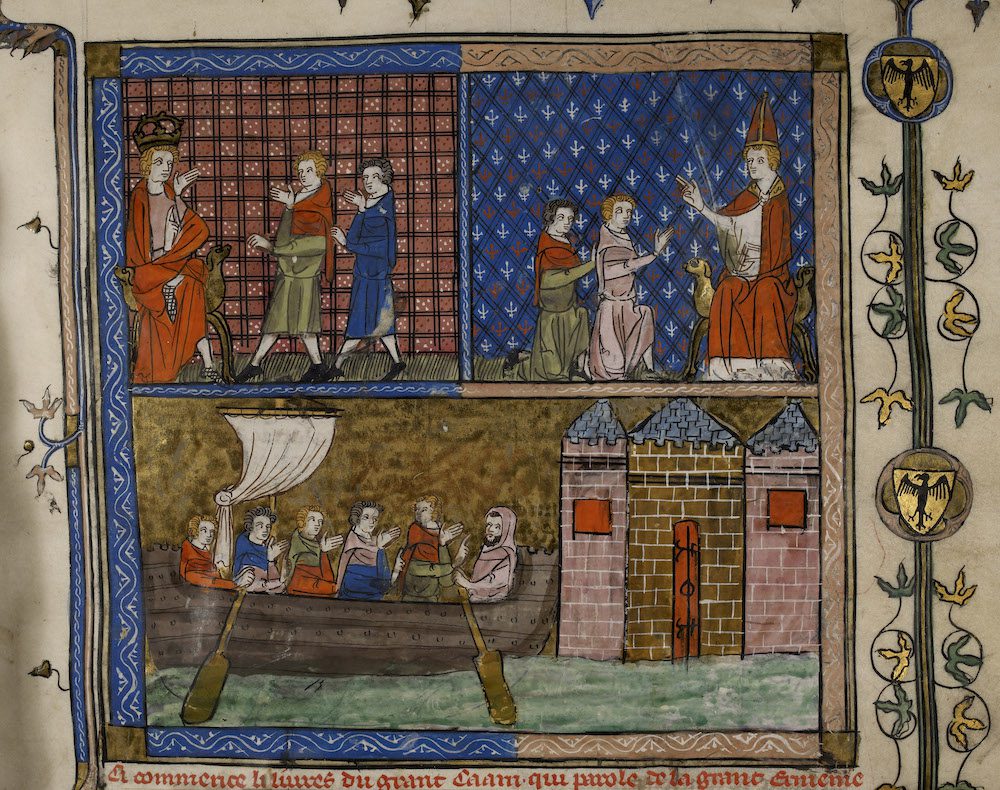
Another edition, well-known for its detailed illustrations, is preserved at the National Library of France, titled “Le Livre des Merveilles de Marco Polo” by the Maître de la Mazarine, dating back to the 15th century. Among the artwork, it is also possible to find the representation of the unicorn that Marco Polo claimed to have spotted on the island of Java.

Want to see more pictures of the two manuscripts? Here is a selection from our archive.
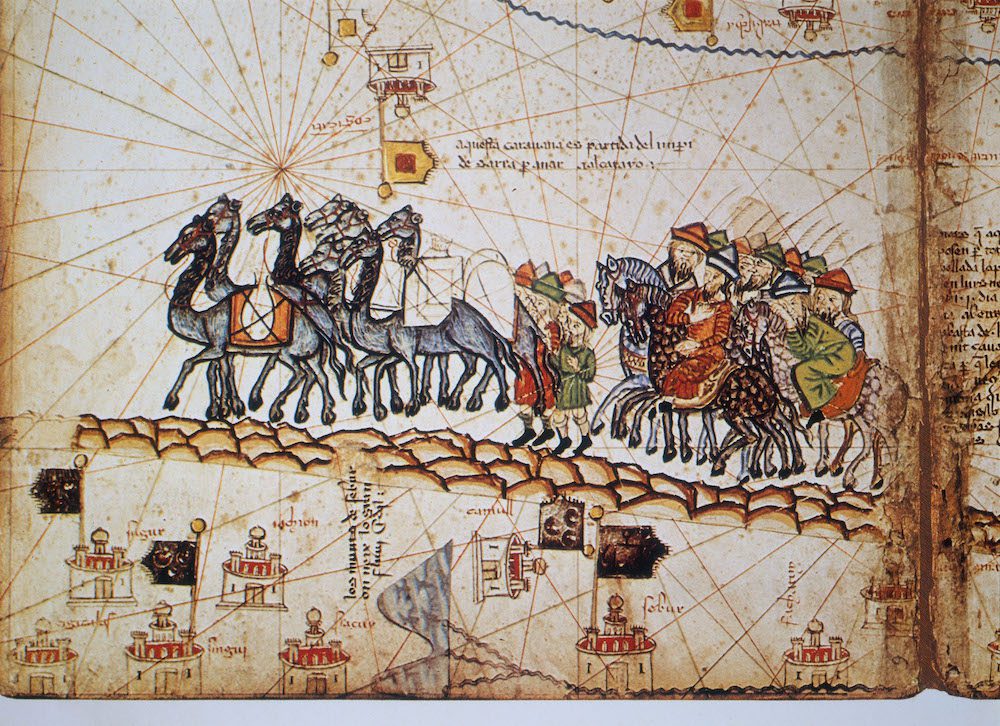
“Quivi si fa molta seta” = ‘Lots of silk is made here’, Marco Polo
Il Milione =Book of the Marvels of the World or more simply The Travels
The Silk Road was a complex system of trade routes that connected the Mediterranean with the East, allowing merchants and travellers to transport goods and ideas between different regions.
Marco Polo travelled along this road during his journeys from Venice to China.
These routes were known since ancient times as the Royal Road of Persia, which extended for over 3000 km from the city of Ecbatana (Hamadan) to the port of Smyrna on the Aegean Sea. Later, this route was extended, by Alexander the Great, to Afghanistan.
During the Roman era, silk had become the iconic commodity exchanged along this route, but it was not so essential as to justify the commitment, especially after Constantinople began to produce it autonomously from the 6th century AD.
The Silk Road regained great importance many centuries later, around 1215, coinciding with the Mongols’ expansion in Asia. From China, precious stones and metals, spices, perfumes, medicines, objects, mirrors, and, above all, gunpowder arrived in Europe. Conversely, China imported livestock, horses, skins, and food.
In the 13th century, the centre of business for the Serene Republic of Venice was Constantinople, which was under Venice’s direct control. It was precisely there that the Polo family managed to find the necessary capital to finance their first journey to Asia. Once they arrived in China, they were welcomed at the court of the Great Khan, who chose them as high-ranking ambassadors in the dialogue with the Pope.
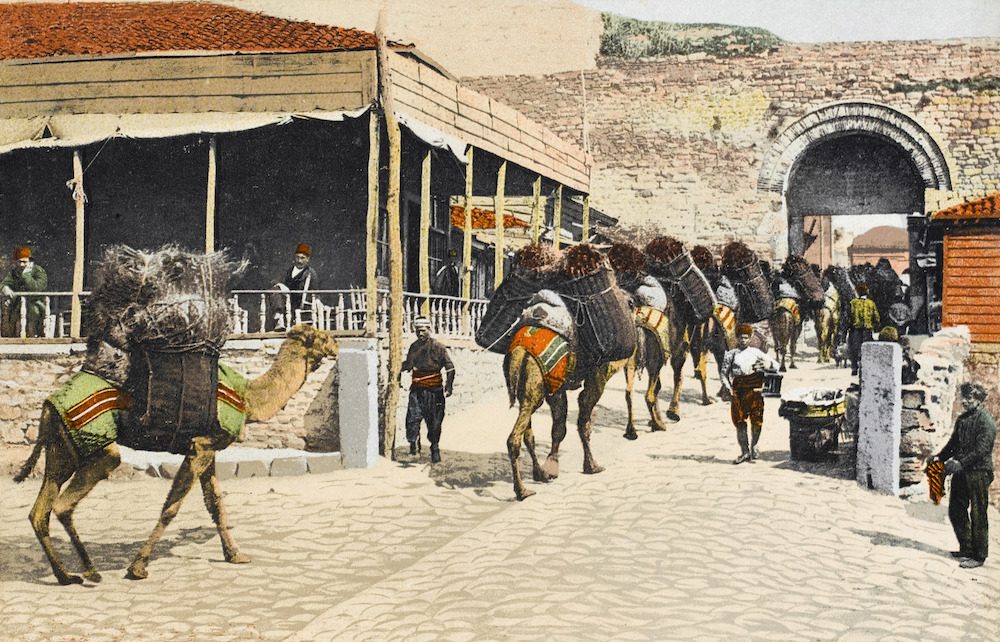
The term “Silk Road” was coined by Ferdinand Richthofen, a German cartographer, who first used it in his book “Tagenbucher aus China” in 1877. After four years of travel (1869-1872) that contributed to the geographical and geological understanding of modern China, Richthofen was able to grasp the great potential of this route, both from a commercial and cultural perspective, rich in knowledge and discoveries.
You can visit a selection of the main geographical maps used between 1200 and 1800 to trace the route to the East and dedicated to China.
In the last ten years, the Silk Road has regained importance. The new Silk Road, announced by Chinese President Xi Jinping in September 2013, crosses the entire Eurasian continent, connecting China to Spain. Through the development of transport and logistics infrastructure, the Chinese strategy aims to expand trade, promote international investments, and increase markets for Chinese products.
We take advantage of this attention on the topic to show you incredible travel reports preserved in our archive, reflecting the romantic charm of Marco Polo’s journey from Venice to Beijing, passing through Turkey, Armenia, Iraq, Iran, Pamir, and the Gobi Desert.
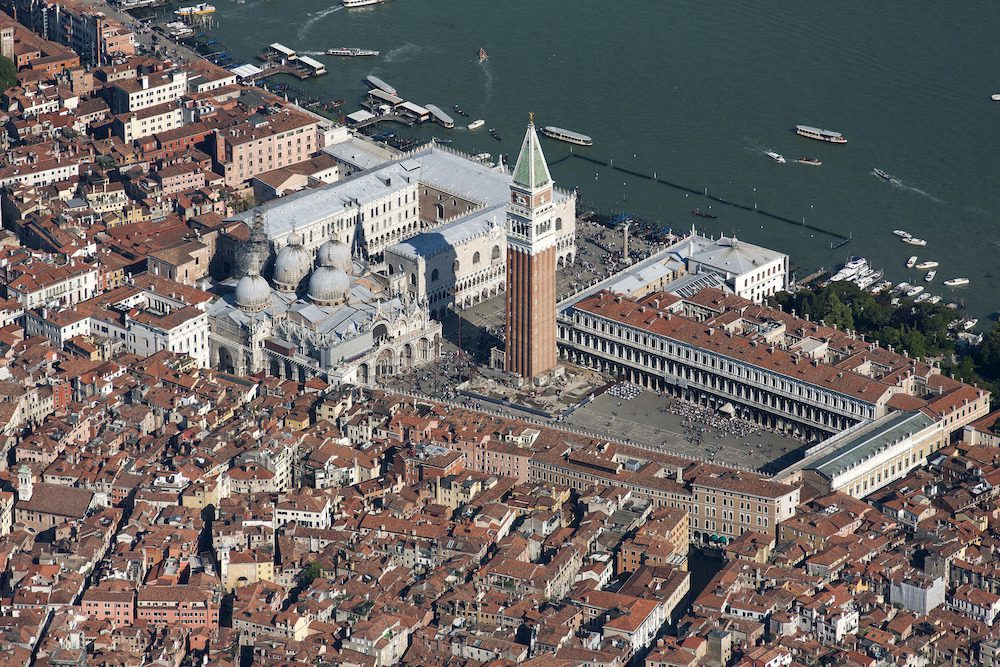
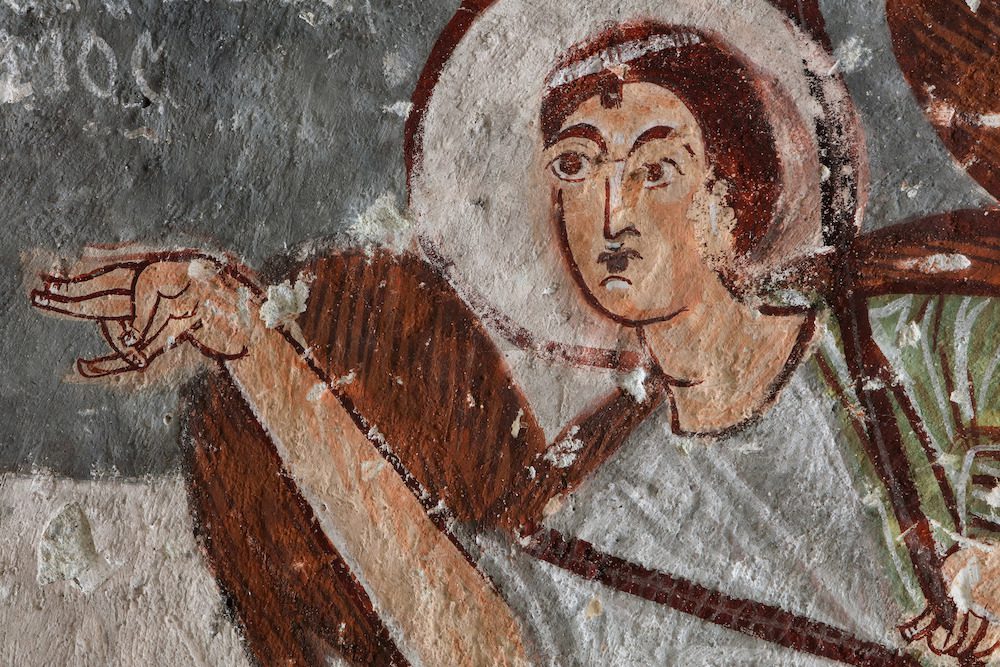
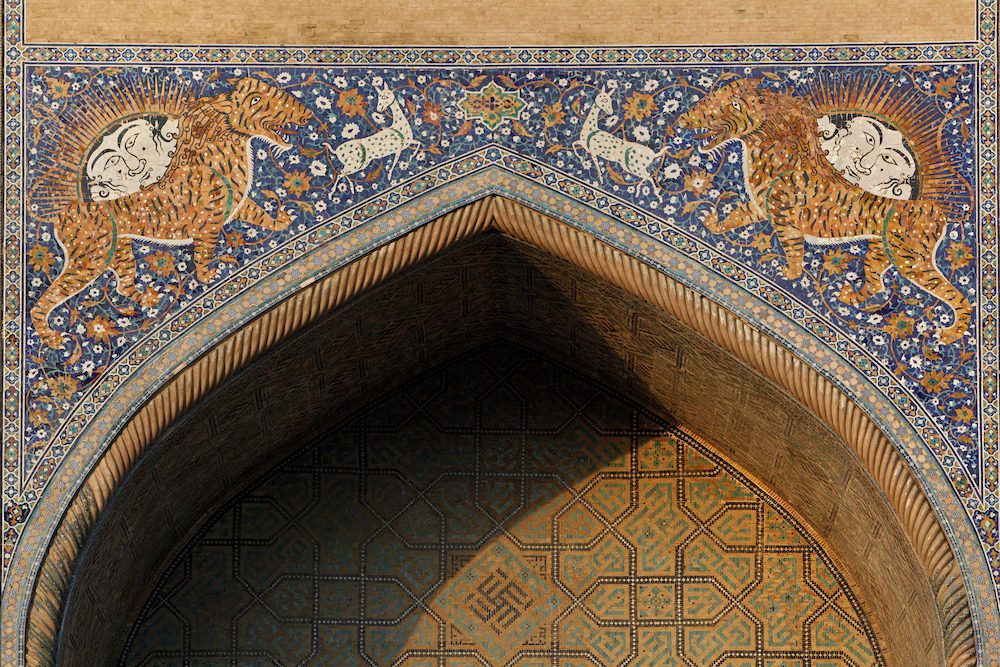
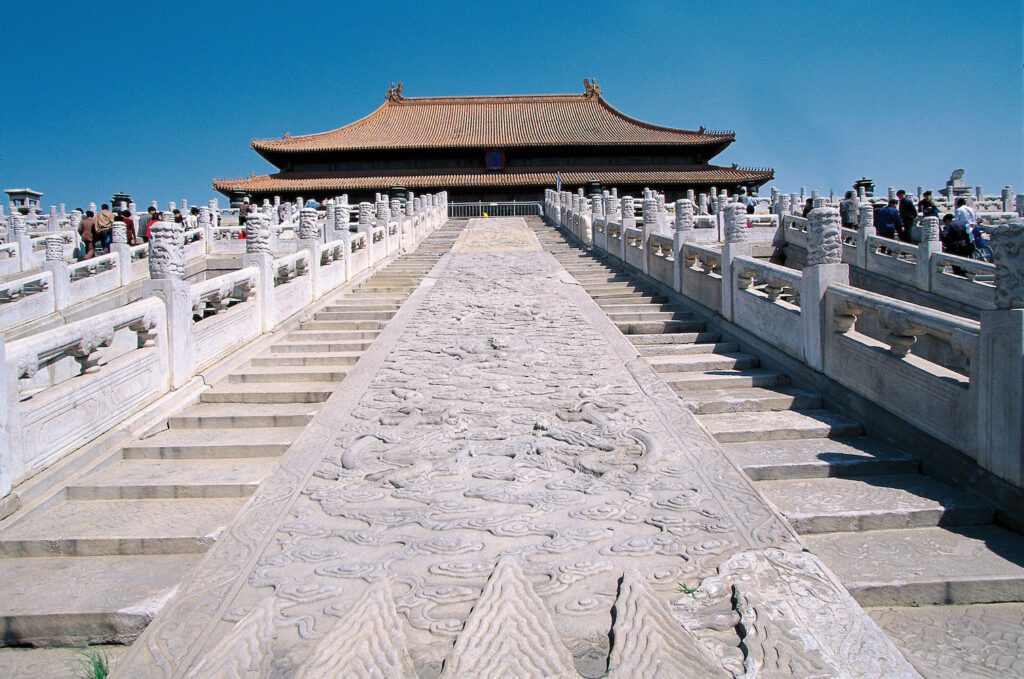
If you would like to learn more about our main archives dedicated to travel reportage, we invite you to explore the collections of New Picture Library, Manuel Cohen and BAMS Photo. You can find links to the respective lightboxes to access the images.
For more information on this or other topics, our team of iconographic researchers is at your disposal. You can visit our Services page to learn more or contact us .
***